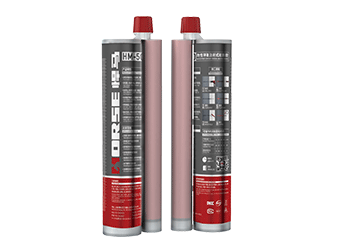Solutions
Horse Construction offers full range of structural strengthening materials with technical supports, documentation supports, products supports, project supports.
Is It Useful To Strengthen And Repair After A Fire?

Fire is one of the most common disasters in social activity areas, which has a huge impact on people's production and life, and even endangers life and building safety. For a building, after a fire, whether to rebuild or reinforce it mainly depends on the damage of the building and the appraisal report of the professional testing unit.
So, can a house still live after a fire? If it is to be strengthened, what should be done? Don't worry, we will analyze it step by step.
Is the house still livable after the fire?
Regarding this issue, we have already mentioned at the beginning of the article that it is necessary to invite professional units to conduct inspection and identification, and conduct a comprehensive evaluation of the building after the fire. Fire damage to buildings can be roughly divided into the following four categories:
1)Mild damage: surface damage on a local scale, edge peeling and cracking;
2)Moderate damage: There is no plastic deformation of the structural component, but there is severe section damage and a reduction in the strength of the reinforcement;
3)Serious damage within the scope of individual building components and structures: partial or complete failure of load-bearing members without collapse;
4)Chemical damage: The most important situation at present is the erosion of concrete structures by PVC combustion gases.
Only through structural inspection can we have a more comprehensive and accurate definition of the usability of buildings after a fire, and also provide scientific basis and guidance for structural reinforcement.
What damage does fire cause to structures?
First: the temperature of the surface exposed to fire rises faster than the interior, and the temperature difference between the inside and outside causes the concrete to crack.
Second: the cement stone is decomposed by heat, so that the cohesive force of the colloid is destroyed, cracks appear, the surface is hairy, sandy, honeycomb-like, cracked, and the edges and corners collapse and fall off.
Third: thermal incompatibility between aggregate and cement stone, cement stone is stretched and aggregate is compressed, resulting in stress concentration and the development of micro-cracks.
For the most common reinforced concrete buildings, after beams, slabs, and columns are exposed to fire, concrete, as the main stress-bearing material of the components and the protective layer of steel reinforcement, will be burnt brittle, burst, peel off, and crack. It will cause its own strength to decrease and the material to lose its bearing capacity. At the same time, under the action of high temperature, the elastic modulus and strength of the steel bar decrease, and the bonding force between the concrete and the steel bar decreases, resulting in a decrease in the stiffness of the component and a decrease in the bearing capacity.
How to strengthen the structure after a fire?
Common reinforcement methods for severely damaged components:
1. Enlarging section reinforcement method: As the name implies, it is to increase the section size of the original component, and if necessary, add steel bars. It is more commonly used for beams and columns where the concrete strength is seriously reduced or the surface concrete peels off after a fire.
2. The floor slab is chiseled and re-pouring: For the floor slab with serious damage, the commonly used reinforcement method is to completely chisel the concrete of the entire floor slab or the severely damaged part. Retain the original reinforcement and re-pour concrete, adding reinforcement if necessary.

Common reinforcement methods for moderately damaged components:
1. Replacement concrete: Chisel the damaged concrete and replace it with concrete or high-strength polymer mortar.
2. Reinforcement by sticking steel and sticking carbon fiber: Reinforce the surface of the component by cladding steel and sticking steel plate and section steel, or sticking carbon fiber cloth and carbon fiber board on the surface of the component for reinforcement.
Common reinforcement methods for components with less damage:
1. Use structural adhesive to repair local damage of components, such as local concrete spalling or local cracks.
2. Spray surface protective agent, and spray polyceramic film, polynano film, impermeable agent, etc. on the surface of components to improve the durability of components.
In short, whether the house needs to be reinforced after the fire and what reinforcement method should be adopted should be carried out on the basis of the scientific and objective appraisal report issued by the authoritative house inspection and appraisal unit. The construction quality of structural reinforcement is the key to the success or failure of fire repair and reinforcement, which must be strictly controlled.
You can find anything here you are in need of, have a trust trying on these products, you will find the big difference after that.

High strength, unidirectional carbon fiber wrap pre-saturated to form a carbon fiber reinforced polymer (CFRP) wrap used to strengthen structural concrete elements.

two-components modified epoxy resin adhesive, with high quality plastic tube, double cartridge package

Two-component epoxy modified epoxy structural strengthening adhesive for bonded steel plate to concrete